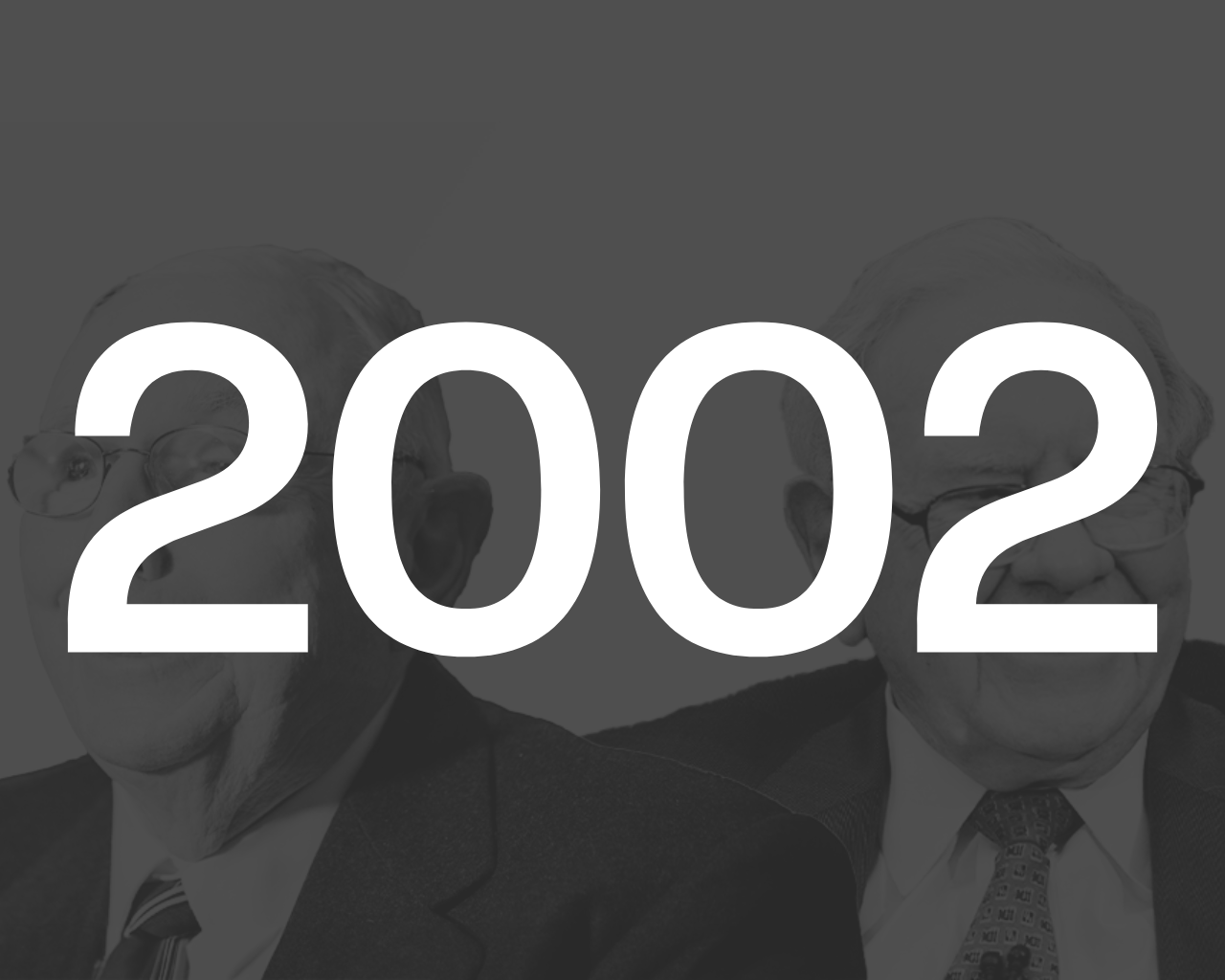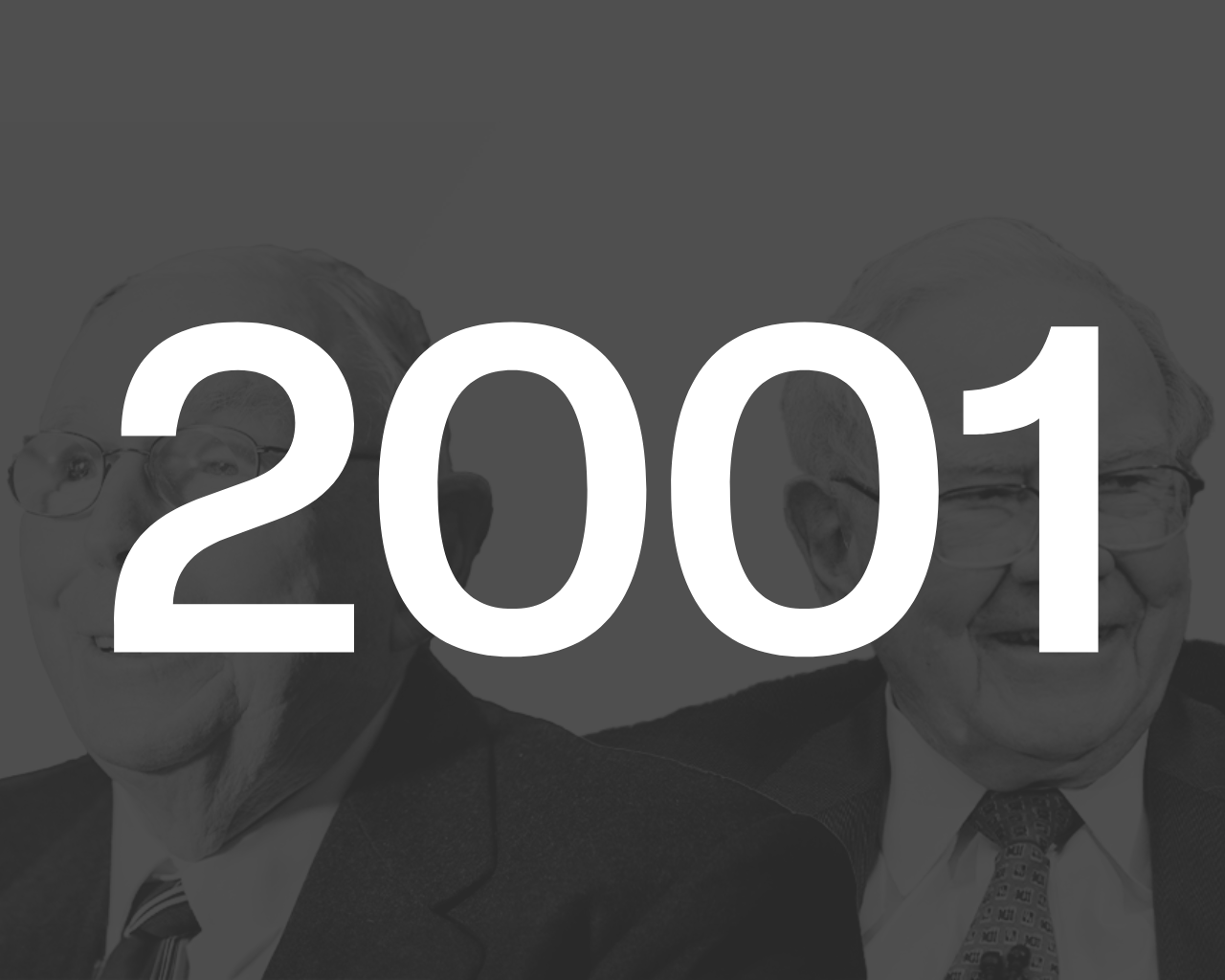1993
Click here to read the letter.🧠 Key Takeaways
What really matters is the company’s financial performance over the long haul. Are revenue, earnings, and free cash flow steadily growing? If so, the share price will eventually reflect that trajectory, because over the long run, share prices tend to follow financial performance.
Concentrating your portfolio in just a handful of businesses you deeply understand can actually lower risk—not increase it.
Volatility simply measures how much and how fast a stock’s price fluctuates. Risk, on the other hand, measures the likelihood of permanent loss of capital.
The real risk in investing isn’t volatility or short-term share price swings. Instead, the biggest risk is whether your investment can maintain or grow your “purchasing power” over time at a reasonable rate—after taxes and inflation.
The more reps you put in analyzing different businesses and industries, the more you start to pick up on the patterns that make a business good, the red flags, and what separates a great company from an average one.
Focusing on beta doesn’t tell you anything about the real-world strengths of a business—like brand power, consumer loyalty, and the durability that comes from them.
✍️ Memorable Quotes
“Whatever the reason, what will count over time is the earnings performance of these companies. If they prosper, Berkshire will also prosper, though not in a lock-step manner.”
Share prices and business fundamentals don’t always move in sync. It’s not uncommon for a company to trade well above or below what its financials justify, making short-term price movements a poor measure of investment success.
What really matters is the company’s financial performance over the long haul. Are revenue, earnings, and free cash flow steadily growing? If so, the share price will eventually reflect that trajectory, because over the long run, share prices tend to follow financial performance.
“The strategy we’ve adopted precludes our following standard diversification dogma. Many pundits would therefore say the strategy must be riskier than that employed by more conventional investors. We disagree. We believe that a policy of portfolio concentration may well decrease risk if it raises, as it should, both the intensity with which an investor thinks about a business and the comfort-level he must feel with its economic characteristics before buying into it. In stating this opinion, we define risk, using dictionary terms, as ‘the possibility of loss or injury.’”
The conventional wisdom says that owning a lot of different stocks reduces risk, and by not doing so, you’re taking on more risk.
But Buffett pushes back on that idea. He actually argues that concentrating your portfolio in just a handful of businesses you deeply understand can actually lower risk—not increase it.
He says that when you own fewer stocks, you’re forced to think more deeply about each one. This should result in you having a deeper understanding of the company, its strengths/weaknesses, and long-term prospects before investing—and that deeper understanding can reduce the chances of making bad, uninformed decisions.
Warren also challenges the way people typically define risk. Instead of thinking of it as being the same thing as volatility—as many people in finance do—he sticks to the dictionary definition: the possibility of losing money.
If concentration leads to better decision-making and fewer mistakes, then it can actually make an investor less likely to suffer real losses, even if they own fewer stocks.
“For owners of a business - and that’s the way we think of shareholders - the academics’ definition of risk is far off the mark, so much so that it produces absurdities. For example, under beta-based theory, a stock that has dropped very sharply compared to the market - as had Washington Post when we bought it in 1973 - becomes “riskier” at the lower price than it was at the higher price. Would that description have then made any sense to someone who was offered the entire company at a vastly-reduced price?”
The stock market is one of the only places where people become less interested in something when it gets cheaper.
In almost any other setting, a lower price makes something more attractive—whether it’s a car, a house, a pair of jeans, or a cup of coffee. But with stocks, lower share prices tend to scare people away rather than pull them in.
I see this all the time. When a stock sees a sudden drop, negative comments start pouring in—Starbucks is a great example of this.
When its share price dropped into the $70s last year, everyone was acting like the company was on the brink of collapse. Sure enough, the stock quickly rebounded to over $100, and the negative comments stopped almost instantly.
This kind of reaction stems from a misunderstanding of risk and volatility—two different concepts that many investors mistakenly think are the same.
Volatility simply measures how much and how fast a stock’s price fluctuates. Risk, on the other hand, measures the likelihood of permanent loss of capital. These are two very different things.
While risk is something to be careful with, volatility can actually be an advantage.
If a stock’s share price sees dramatic swings, it can create buying opportunities. And if the price goes down, that doesn’t necessarily make it riskier. If anything, it can actually make it less risky because a lower price offers a higher margin of safety.
This brings us back to Warren Buffett’s point. According to academic finance, a stock that falls fast and furious becomes “riskier” simply because it’s more volatile.
But if you were given the chance to buy an entire company at a much lower price, would you think that makes the investment riskier—or would it make it a better deal?
At the end of the day, if the underlying company is still strong, then a lower share price is actually a good thing. You should look at it as an opportunity, not a red flag.
“In our opinion, the real risk that an investor must assess is whether his aggregate after-tax receipts from an investment (including those he receives on sale) will, over his prospective holding period, give him at least as much purchasing power as he had to begin with, plus a modest rate of interest on that initial stake. Though this risk cannot be calculated with engineering precision, it can in some cases be judged with a degree of accuracy that is useful.”
Buffett is basically saying that the real risk in investing isn’t volatility or short-term share price swings. Instead, the biggest risk is whether your investment can maintain or grow your “purchasing power” over time at a reasonable rate—after taxes and inflation.
He says that while you can’t measure this risk with exact precision, you can still make a decent judgment based on a few key factors, such as:
How predictable are the business’s long-term economics? If a company has a durable competitive advantage and operates in a relatively stable industry, it’s easier to predict its financial trajectory. On the other hand, if the business is in a highly cyclical or fast-changing industry, it’s much harder to gauge its long-term prospects.
How competent and trustworthy is management? It’s not enough for a business to have strong financials—it needs leaders who can steer the ship and properly allocate capital. If management is negligent or short-sighted, they can negatively impact a great business’s potential.
Does management prioritize shareholders? Even if management seems competent, they also need to be aligned with shareholders. Do they reinvest cash wisely (metrics like ROIC and ROCE can help assess this) and reward shareholders through dividends or buybacks, or do they waste money on bad acquisitions and empire-building?
What price are you paying? Even the best business in the world can be a bad buy at the wrong price. If you pay too much, your returns will suffer, no matter how good the company is.
What role do taxes and inflation play? Even if a business delivers strong returns, inflation is still erosive, and taxes take another bite. So your investments need to produce enough returns to outpace both, or you’re essentially losing ground.
Overall, if you can get a solid read on these five factors, you'll end up making much better (and much less risky) investment decisions.
“Just as Justice Stewart found it impossible to formulate a test for obscenity but nevertheless asserted, “I know it when I see it,” so also can investors - in an exact but useful way - “see” the risks inherent in certain investments without reference to complex equations or price histories.”
This is something you get better at with experience. The more reps you put in analyzing different businesses and industries, the more you start to pick up on the patterns that make a business good, the red flags, and what separates a great company from an average one.
It’s basically just a muscle you have to train. The more you exercise it, the stronger it gets.
“The theoretician bred on beta has no mechanism for differentiating the risk inherent in, say, a single-product toy company selling pet rocks or hula hoops from that of another toy company whose sole product is Monopoly or Barbie. But it’s quite possible for ordinary investors to make such distinctions if they have a reasonable understanding of consumer behavior and the factors that create long-term competitive strength or weakness. Obviously, every investor will make mistakes. But by confining himself to a relatively few, easy-to-understand cases, a reasonably intelligent, informed and diligent person can judge investment risks with a useful degree of accuracy.”
Focusing on beta doesn’t tell you anything about the real-world strengths of a business—like brand power, consumer loyalty, and the durability that comes from them.
In Buffett’s example, a company selling pet rocks or generic hula hoops is way riskier than one that owns Monopoly or Barbie. What makes the difference is brand recognition and consumer attachment.
Toy fads come and go, but an iconic brand has staying power and lasting value. If you’re just looking at beta and volatility to measure risk, you’re missing the bigger picture entirely.




Memorable quotes and key takeaways from the 2003 Berkshire Hathaway shareholder letter.